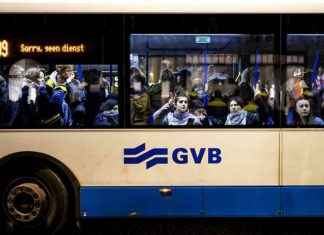On July 1, will mark the launch of the tourist season in the whole of Europe. This date should reopen the whole of the internal borders of the Union, and all measures of quarantine will be lifted. This decision of the Interior ministers of Twenty-Seven, gathered in a video conference, should put an end to the clashes to repeat.
see also : summer Holidays and coronavirus: when and where could we go?
With the will to save the tourist season, the timing of the opening of internal borders has accelerated in recent days. A majority of governments has allowed the resumption of travel within the european Union from 15 June. But not all of them. Spain, for example, prefers to wait until the end of the month. Others, such as Poland, Bulgaria or Lithuania, are still hesitant and have not made an announcement. The european commissioner for home Affairs has called for a return to the complete operation of the Schengen system and the freedom of movement “to the later end of June”. Sanitary measures such as distancing physics are still necessary, but “there is more justification for additional restrictions on travel or border measures within the EU-Schengen, stressed Ylva Johansson. A clear message of the one who, in the beginning of the week, claimed that the border closures were attributable to a reflex of fear of the member States, which have “acted a little like individuals” rushing to the “supermarket to buy pasta and toilet paper” and returned “to the house by locking more or less its doors.”
see also : Coronavirus: discover the country, who re-opened their borders
On July 1, also concerns the external borders, closed since march 17. The european Commission, as a number of capitals, believes that re-opening the EU to the outside world should only be done once all the internal borders will be open. “If the internal border controls are lifted at the end of June, we should be able to consider a gradual lifting of the ban on travel for non-essential (to the EU) at the beginning of July,” says the commissioner Ylva Johansson.
A strategy of openness co-ordinated
This time will not be in vain. It must allow to prepare a co-ordinated approach of the Twenty-Seven for a gradual opening. As this will not be a return to the pre-Covid. “We will need to have a strategy of opening coordinated, taking into account the epidemiological situation of the third countries”, insists the French secretary of State, Laurent Nunez. It is planned to open the borders, first to certain third countries in which the epidemiological situation would be stable. The countries of the East want to be able to quickly open their borders to their neighbours in the Balkans. For others, interest is more toward american tourists, asians, or even russians. It also raises the question of the controls that will be carried out at the entrance of the european territory.
We will need to have a strategy of opening coordinated, taking into account the epidemiological situation of the third country
Lawrence Nuñez, French secretary of State
If the main issue is to allow the arrival of tourists to non-european, some of the capitals intend to regulate the travel of their citizens to the rest of the world. They want the creation of a european list of destinations to be avoided. Venezuela or certain countries in Africa are specifically targeted.
The challenge now is to agree on the criteria and the timetable for the gradual opening of the external borders. Because “there are differences”, says one. The negotiations promise to be difficult, as it must go fast. The Commission will, as early as next Wednesday, a set of recommendations. It will then be for the governments to coordinate the implementation.
The editorial team conseilleL’Italy reopens its borders to save its industry touristiqueQuels are those States which maintain the closure of the borders in Europe?SujetsUnion européenneFrontièresCovid-19CoronavirusDéconfinementAucun comment
there are currently no comments on this article.
Be the first to give your opinion !
I write a comment






